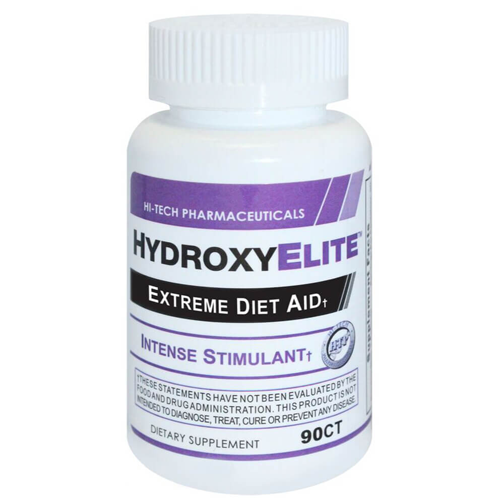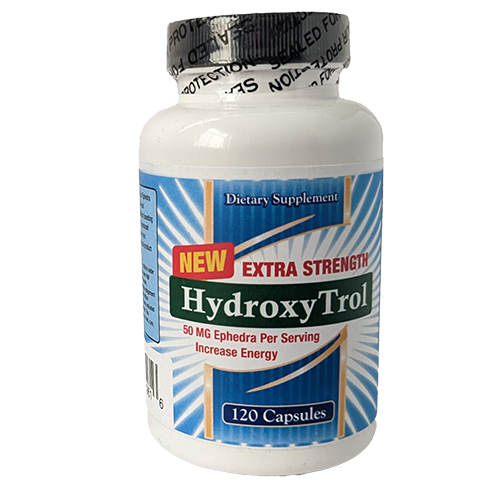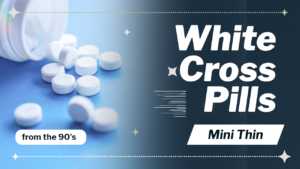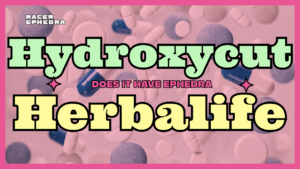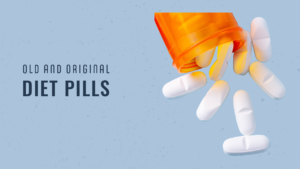In the 1990s, diet pills became a cultural phenomenon, promising quick and effortless weight loss to millions of people. These pills, often marketed as a magic solution to shed pounds, captured the attention and wallets of individuals eager to achieve their ideal body. The allure of these pills was undeniable, but so were the controversies surrounding their use. As we revisit the era of 90s diet pills, we uncover the rise and popularity of these supplements, the controversies they sparked, and the lasting impact they had on the weight loss industry.
The Rise and Popularity of Diet Pills in the 90s
The 90s marked a significant shift in society’s perception of body image and the pursuit of an ideal figure. With the rise of supermodels and the emphasis on thinness, diet pills gained immense popularity as a means to achieve rapid weight loss. Companies capitalized on this trend, flooding the market with a plethora of diet pills promising miraculous results. These supplements were often marketed as appetite suppressants, fat burners, or metabolism boosters, appealing to individuals desperate to shed unwanted pounds.
The ease of access to these diet pills further contributed to their popularity. They were readily available over the counter, making them easily accessible to anyone seeking a quick fix for their weight struggles. Unfortunately, the lack of regulation and oversight meant that many of these pills contained questionable ingredients, their safety and effectiveness often untested.

Controversies Surrounding 90s Diet Pills
With the surge in popularity of diet pills, a wave of controversies followed. One of the major concerns was the potential health risks associated with these supplements. Many diet pills in the 90s contained ingredients such as ephedra, a stimulant that could lead to high blood pressure, heart palpitations, and even fatal consequences. Reports of adverse reactions and deaths linked to these pills raised alarm bells and prompted investigations into their safety.
Another controversy surrounding 90s diet pills was the lack of scientific evidence to support their claims. While some pills did show short-term weight loss results, the long-term effects and sustainability of these outcomes were questionable. Additionally, the marketing tactics employed by companies often exaggerated the benefits of these pills while downplaying the potential risks, misleading consumers into believing they had found a miracle weight loss solution.
Popular Diet Pills in the 90s and Their Ingredients
During the 90s, several diet pills dominated the market, each with its unique blend of ingredients. One of the most well-known diet pills was Fen-Phen, a combination of fenfluramine and phentermine. Fenfluramine acted as an appetite suppressant, while phentermine stimulated the release of norepinephrine, reducing hunger. However, the use of Fen-Phen was discontinued due to reports of heart valve damage linked to its usage.
Another popular diet pill was Metabolife 356, which contained ephedra as its primary ingredient. Ephedra was believed to boost metabolism and enhance weight loss. However, the risks associated with ephedra led to its ban in the early 2000s. These examples illustrate the prevalence of potentially harmful ingredients in 90s diet pills and highlight the importance of understanding the composition of these supplements before considering their use.
Effectiveness and Safety of 90s Diet Pills
The effectiveness of 90s diet pills varied among individuals. While some experienced short-term weight loss, often attributed to appetite suppression or increased metabolism, others saw little to no results. Additionally, the sustainability of the weight loss achieved through these pills was questionable, with many individuals regaining the lost weight once they stopped taking the supplements.
The safety of these diet pills was a major concern. The presence of ingredients like ephedra and the lack of regulation meant that consumers were potentially putting their health at risk. Reports of adverse effects and even fatalities caused by these pills highlighted the need for stricter regulations and oversight in the weight loss supplement industry. The lessons learned from the controversies of the 90s diet pills led to significant changes in the way these products are now regulated.
The Allure of 90s Diet Pills – Marketing and Celebrity Endorsements
The allure of 90s diet pills was not solely based on their promised weight loss results but also on the marketing strategies employed by companies. These pills were often marketed using before-and-after photos, testimonials, and celebrity endorsements. The images of individuals achieving their dream bodies with the help of these supplements created a sense of hope and aspiration among consumers.
Celebrity endorsements played a significant role in the popularity of 90s diet pills. Influential figures, often seen as epitomes of beauty and fitness, lent their names and faces to promote these supplements. The association of these fat burner pills with famous personalities further reinforced the belief that they were the key to achieving a desired physique. However, it is important to remember that these endorsements were often paid partnerships and may not have represented the true experiences of the celebrities themselves.
The Impact of 90s Diet Pills on the Weight Loss Industry
The era of 90s diet pills left a lasting impact on the weight loss industry. The controversies surrounding these supplements prompted regulatory agencies to take action and implement stricter guidelines for the manufacturing and marketing of weight loss products. The ban on ingredients like ephedra and the requirement for scientific evidence of safety and efficacy have significantly changed the landscape of the weight loss supplement industry.
The legacy of 90s diet pills also brought about a shift in public perception. While these pills were once seen as a quick fix, there is now a greater emphasis on sustainable and healthy weight loss practices. The understanding that there is no magic solution and that lifestyle changes, including a balanced diet and regular exercise, are the key to achieving long-term weight loss has become more prevalent.
Current Regulations and Restrictions on Diet Pills
In response to the controversies surrounding 90s diet pills, regulatory agencies have implemented stricter regulations and restrictions on the manufacturing and sale of diet pills. The United States Food and Drug Administration (FDA), for example, now requires manufacturers to provide scientific evidence of safety and efficacy before their products can be approved for sale. Additionally, certain ingredients, such as ephedra, have been banned due to their potential health risks.
These regulations aim to protect consumers from potentially harmful supplements and to ensure that weight loss products on the market are safe and effective. However, it is important for individuals to remain vigilant and informed when considering the use of diet pills, as new products continue to emerge and the industry evolves.
Lessons Learned from the 90s Diet Pill Era
The 90s diet pill era taught us valuable lessons about the dangers of quick-fix weight loss solutions. It highlighted the importance of critical thinking and skepticism when it comes to weight loss claims made by companies. It also emphasized the need for scientific evidence and regulation to protect consumers from potentially harmful products.
Furthermore, the era of 90s diet pills taught us that sustainable weight loss requires holistic lifestyle changes rather than relying solely on pills or supplements. A balanced diet, regular exercise, and a focus on overall well-being are key to achieving and maintaining a healthy weight.
Introduction to Metabolife 356 and Hydroxycut with Ephedra
In the 1990s, the weight loss supplement market saw the rise of two popular products: Metabolife 356 and Hydroxycut with Ephedra. These supplements gained immense popularity due to their claims of quick and effective weight loss. However, they also sparked controversy and raised concerns about their safety and potential health risks. In this article, we will delve into the phenomenon of these supplements, exploring their ingredients, effectiveness, side effects, and the legacy they have left behind.
The Popularity and Controversy Surrounding These Supplements
Metabolife 356 and Hydroxycut with Ephedra quickly gained a massive following in the 90s. Their marketing campaigns promised rapid weight loss, increased energy levels, and improved athletic performance. People were drawn to the idea of shedding pounds effortlessly and achieving their desired body shape. However, as the popularity of these supplements grew, so did the controversy surrounding them.
Critics voiced concerns about the safety and effectiveness of the products. Reports of serious side effects, including heart palpitations, high blood pressure, and even deaths, started to emerge. The use of ephedra, a powerful stimulant found in both Metabolife 356 and Hydroxycut, drew particular attention. The controversy surrounding these supplements led to increased scrutiny from health authorities and eventually led to the ban on ephedra-containing products.
Understanding the Ingredients and How They Work
Metabolife 356 and Hydroxycut with Ephedra contained ephedra as their primary ingredient. Ephedra is a naturally occurring substance derived from plants and has stimulant properties. It works by stimulating the central nervous system, increasing heart rate and blood pressure, and suppressing appetite. This combination of effects was believed to promote weight loss by boosting metabolism and reducing food intake.
Additionally, both supplements contained a blend of other ingredients, such as caffeine, green tea extract, and various herbs. These ingredients were included to enhance the thermogenic effects of ephedra and provide additional energy and fat-burning properties.
The Effectiveness of Metabolife 356 and Hydroxycut with Ephedra
The effectiveness of Metabolife 356 and Hydroxycut with Ephedra in promoting weight loss has been a subject of debate. Some users reported significant weight loss and increased energy levels, attributing their success to these supplements. However, it is important to note that individual results may vary, and these supplements were not a guaranteed solution for everyone.
The weight loss experienced by users of Metabolife 356 and Hydroxycut with Ephedra can be attributed to the stimulant properties of ephedra and the thermogenic effects of the other ingredients. Ephedra increases metabolism and suppresses appetite, leading to a calorie deficit and subsequent weight loss. However, it is crucial to consider the potential risks and side effects associated with these supplements.
Potential Side Effects and Health Risks Associated with These Supplements
The use of Metabolife 356 and Hydroxycut with Ephedra came with a range of potential side effects and health risks. The stimulant properties of ephedra could lead to increased heart rate, high blood pressure, and irregular heart rhythms. These effects posed a significant risk, especially for individuals with pre-existing heart conditions.
Other reported side effects included insomnia, anxiety, nervousness, and gastrointestinal issues. The combination of ephedra and caffeine in these supplements also heightened the risk of adverse reactions. It is crucial to note that individual reactions can vary, and some individuals may be more susceptible to these side effects than others.
The FDA’s Involvement and the Ban on Ephedra-Containing Products
In response to the growing concerns surrounding the safety of ephedra-containing products, the Food and Drug Administration (FDA) took action. In 2004, the FDA banned the sale of dietary supplements containing ephedra alkaloids. This decision was based on the mounting evidence of the potential health risks associated with ephedra and its potential for misuse.
The ban on ephedra-containing products marked a significant turning point for the weight loss supplement industry. It highlighted the importance of rigorous testing and regulation to ensure the safety of dietary supplements. The FDA’s involvement in this issue has had a lasting impact on the formulation and marketing of weight loss products.
The Legacy of Metabolife 356 and Hydroxycut with Ephedra
Despite the controversies and eventual ban, the legacy of Metabolife 356 and Hydroxycut with Ephedra remains. They were pioneers in the weight loss supplement industry, paving the way for future products and innovations. The popularity of these supplements sparked a greater interest in weight loss and fueled the demand for quick and effective solutions.
While the use of ephedra has been discontinued in dietary supplements, its impact on the weight loss industry cannot be ignored. The rise and fall of Metabolife 356 and Hydroxycut with Ephedra brought the potential dangers of unregulated supplements into the public eye and led to stronger regulations and safety standards.
Alternatives to These Supplements in the Modern Market
In the wake of the ban on ephedra-containing products, the weight loss supplement market has evolved. Today, there are numerous alternatives available that claim to aid in weight loss without the use of potentially harmful ingredients. These alternatives often rely on natural ingredients, such as green tea extract, Garcinia Cambogia, and conjugated linoleic acid (CLA).
It is important to note that the effectiveness and safety of these alternatives vary. Consulting with a healthcare professional or a registered dietitian is crucial before starting any new weight loss supplement. They can provide guidance tailored to individual needs and help navigate the overwhelming array of products on the market.
Consumer Experiences and Testimonials
The experiences and testimonials of consumers who have used Metabolife 356 and Hydroxycut with Ephedra provide valuable insights into the effects and potential risks of these supplements. Many users reported initial success with weight loss and increased energy levels. However, the side effects and health risks associated with these supplements cannot be disregarded.
It is essential to approach these testimonials with caution and consider the individual circumstances and reactions. What may work for one person may not work or may even be harmful to another. The experiences of others can serve as a starting point for research and discussion with healthcare professionals, but should not be the sole basis for decision-making.
Reflecting on the Impact of Metabolife 356 and Hydroxycut with Ephedra
The phenomenon of Metabolife 356 and Hydroxycut with Ephedra in the 90s left a lasting impact on the weight loss supplement industry. These supplements gained immense popularity, but their use also raised concerns about safety and potential health risks. The ban on ephedra-containing products by the FDA marked a significant turning point and highlighted the need for stricter regulations.
While the legacy of these supplements persists, the modern market offers alternatives that focus on natural ingredients and claim to provide safe and effective weight loss solutions. However, it is crucial to approach these products with caution and seek professional guidance. The experiences and testimonials of other consumers can offer insights, but individual circumstances and reactions must be considered.
In conclusion, the original Metabolife 356 and Hydroxycut with Ephedra from the 90s have left a complex legacy. They ignited a trend in weight loss supplements while also shining a spotlight on the potential dangers of unregulated products. The lessons learned from this phenomenon have shaped the weight loss supplement industry and emphasized the importance of safety and efficacy in product development.
Conclusion: The Legacy of 90s Diet Pills and Their Impact on Today’s Weight Loss Industry
The allure and controversy surrounding 90s diet pills have left a lasting impact on the weight loss industry. While they promised quick and effortless weight loss, their effectiveness and safety were often questionable. The controversies sparked by these pills led to stricter regulations and greater awareness of the potential risks associated with weight loss supplements.
The legacy of the 90s diet pill era has shifted the focus towards sustainable and healthy weight loss practices. We now understand that there is no magic solution and that long-term success requires lifestyle changes rather than relying on pills alone. As we move forward, it is crucial to remain informed, skeptical, and prioritize our health when considering weight loss options.
If you are considering using weight loss supplements, consult with a healthcare professional to ensure they are safe and suitable for your individual needs.
References
Rados C. Ephedra ban: no shortage of reasons. FDA Consum. 2004 Mar-Apr;38(2) 6-7. PMID: 15101356.
Case, C.C. and Maldonado, M. (2002), Diabetic ketoacidosis associated with Metabolife: a report of two cases. Diabetes, Obesity and Metabolism, 4: 402-406. https://doi.org/10.1046/j.1463-1326.2002.00235.x
Frank LoVecchio, Belinda Sawyers, Patricia A. Eckholdt, Transient ischemic attack associated with Metabolife 356 use, The American Journal of Emergency Medicine,
Volume 23, Issue 2, 2005, Pages 199-200, ISSN 0735-6757, https://doi.org/10.1016/j.ajem.2003.12.028
Lobb A. Science of weight loss supplements: compromised by conflicts of interest? World J Gastroenterol. 2010 Oct 14;16(38):4880-2. doi: 10.3748/wjg.v16.i38.4880. PMID: 20939120; PMCID: PMC2955261.
Araujo JL, Worman HJ Acute liver injury associated with a newer formulation of the herbal weight loss supplement Hydroxycut bcr-2015-210303
Case Reports 2015;2015:bcr2015210303.
Kockler, D.R., McCarthy, M.W. and Lawson, C.L. (2001), Seizure Activity and Unresponsiveness after Hydroxycut Ingestion. Pharmacotherapy: The Journal of Human Pharmacology and Drug Therapy, 21: 647-651. https://doi.org/10.1592/phco.21.6.647.34542
